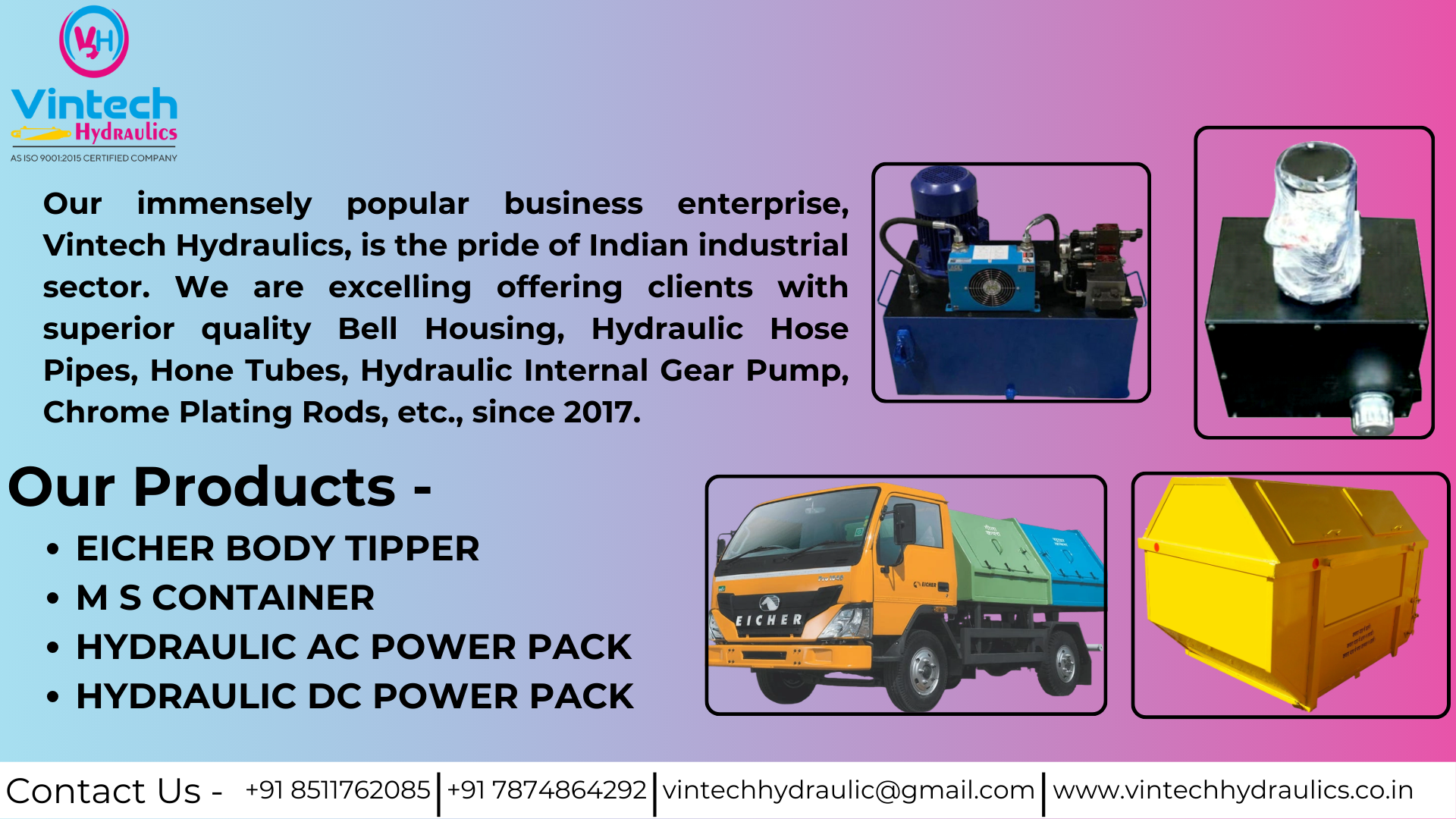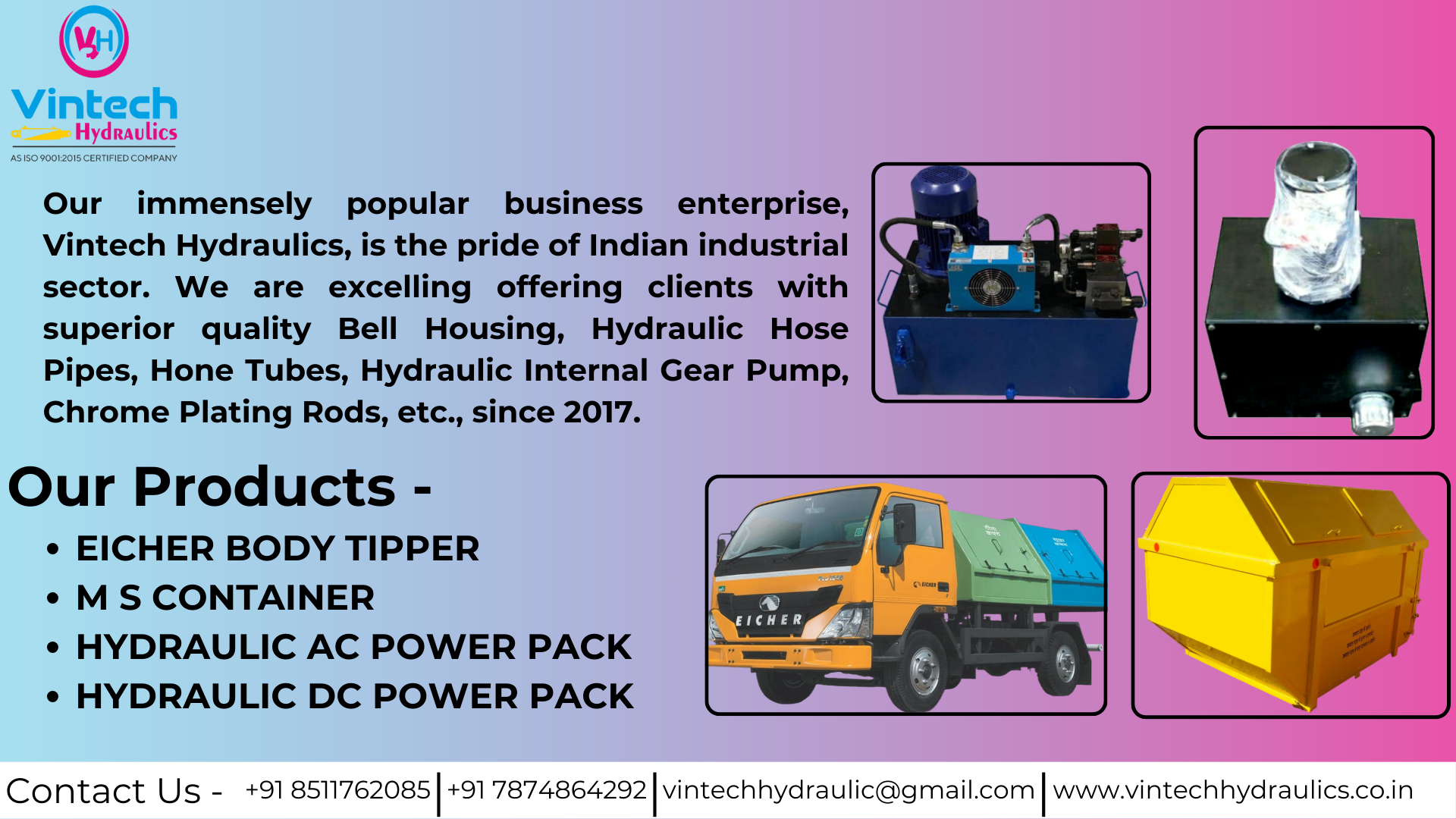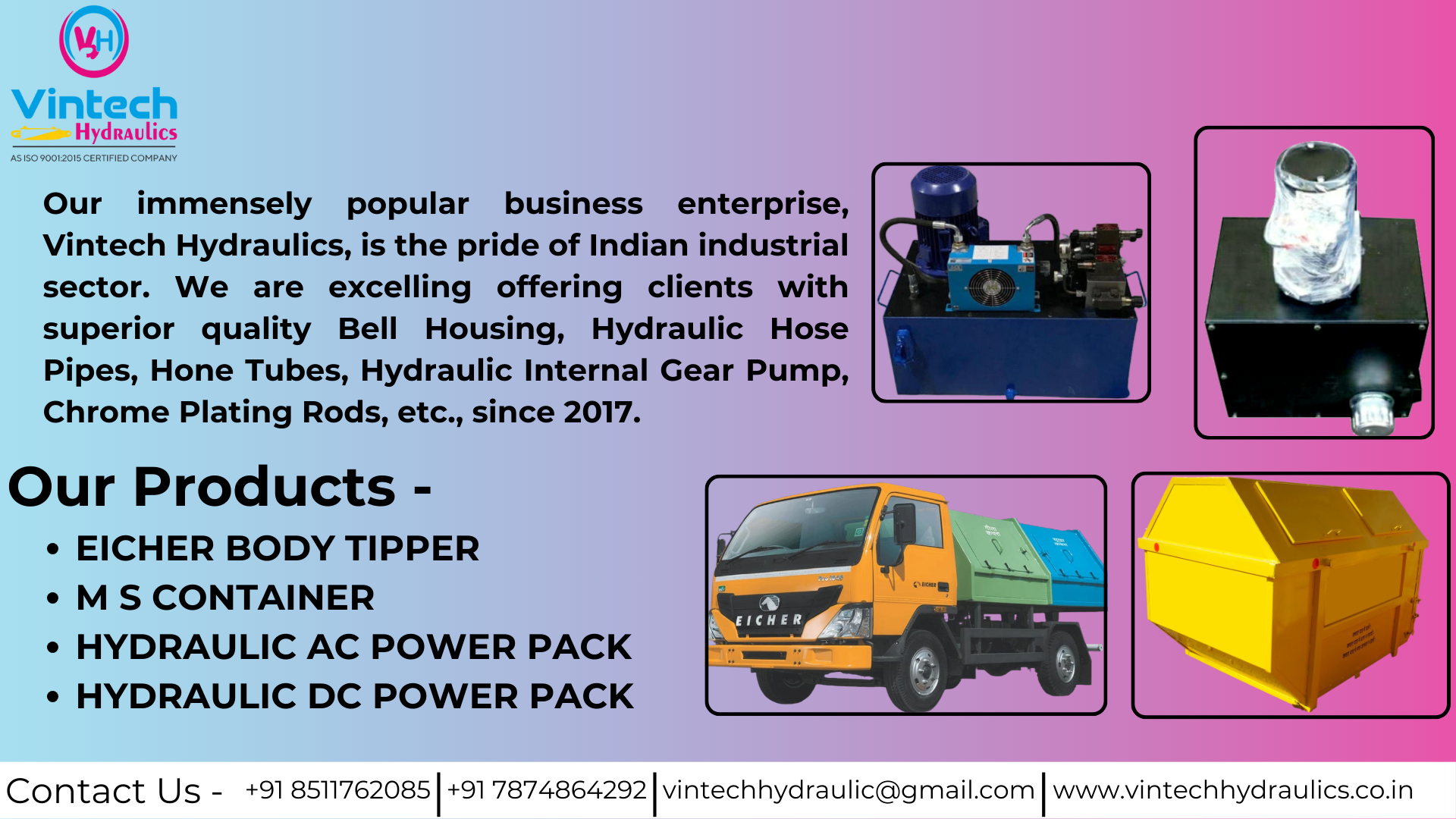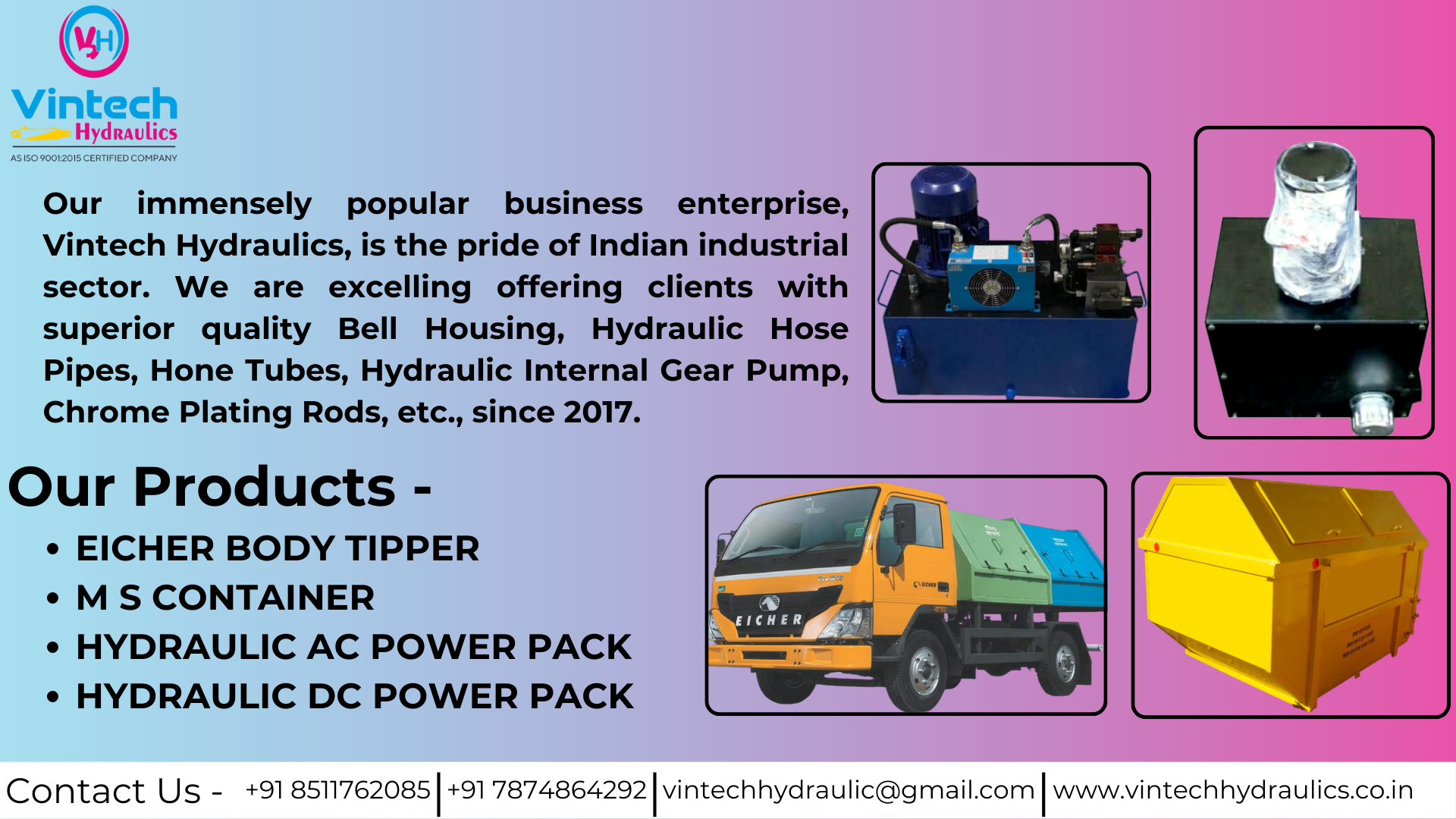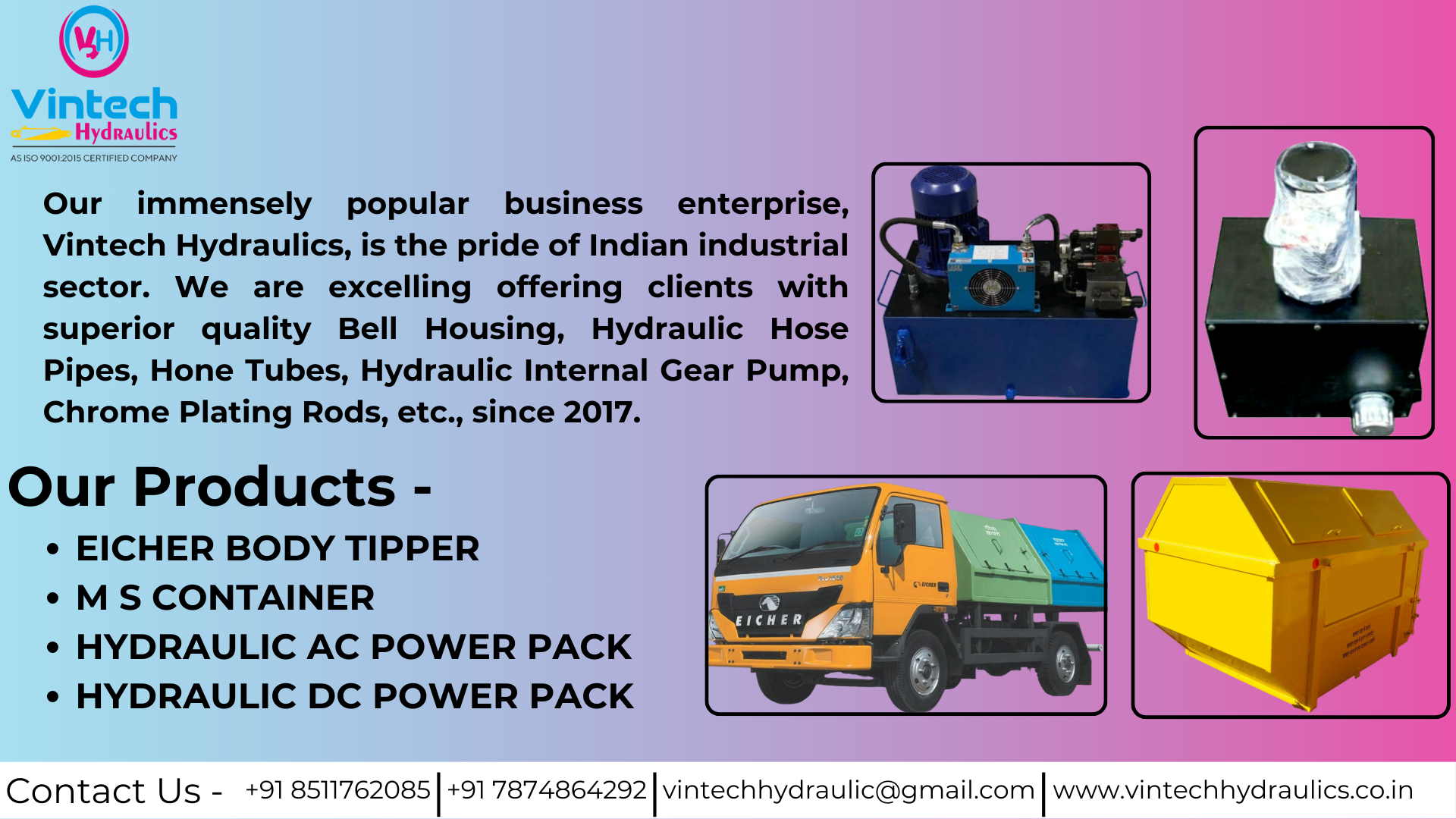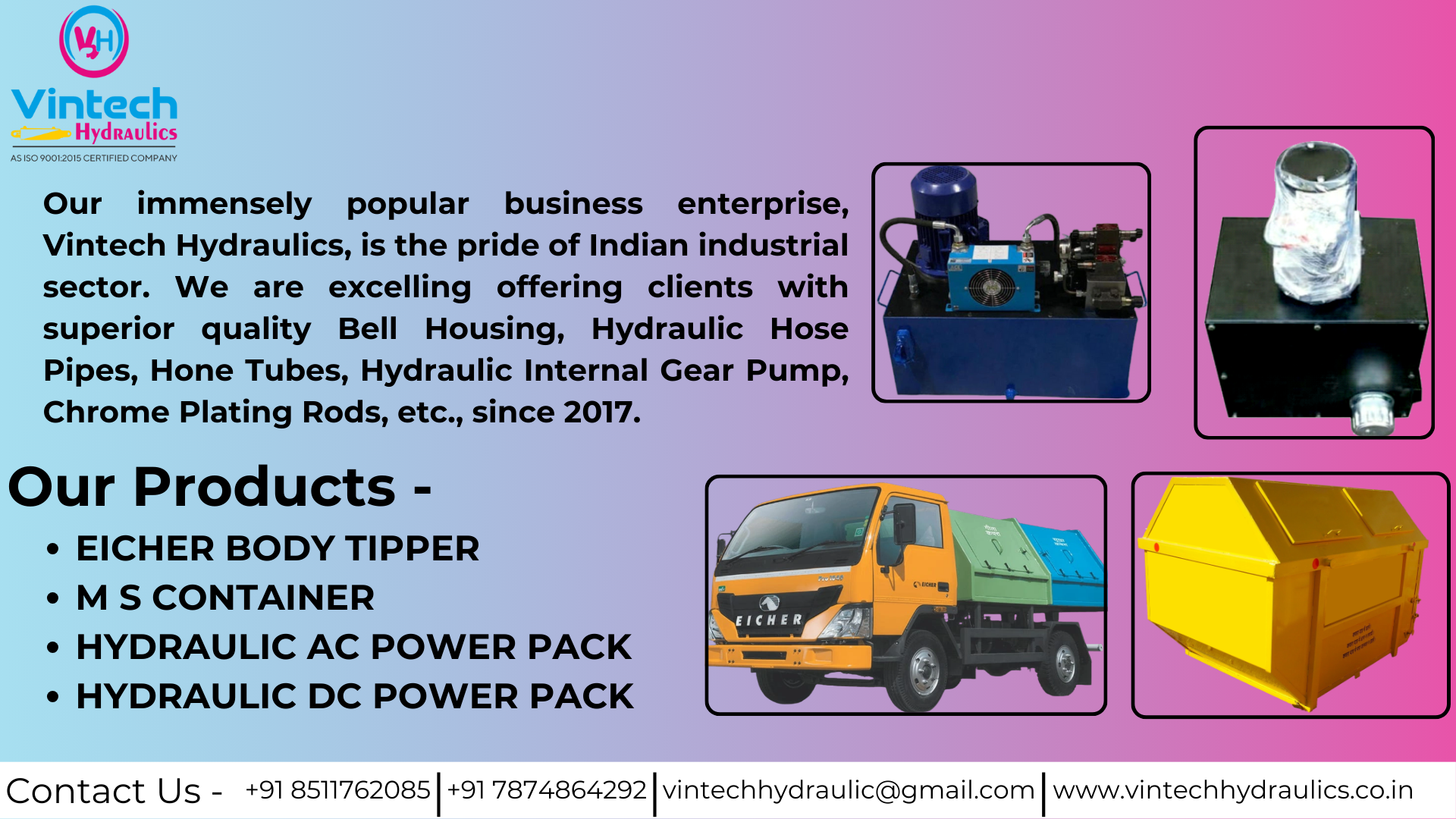
Hydraulic Cylinder Catalogue
Hydraulic Cylinder Catalogue
This catalogue-style guide compiles India-ready hydraulic cylinder ranges, standard sizes, and customization options in one place. Use it to compare bore × stroke combinations, mounting styles, seal packages, cushions, and sensor options before RFQ. You’ll also find ordering codes, inspection checklists, and maintenance intervals aligned with multi-shift duty cycles. For application engineering or a downloadable PDF catalogue, visit Vintech Hydraulics.
A cylinder converts hydraulic energy into linear force. In catalogue terms, selection follows a process: define load and pressure → compute bore and rod size → fix stroke & buckling safety → choose mount (clevis, trunnion, flange, foot) → pick seals (NBR/FKM/PTFE) by speed/temperature → add cushions and position sensing → finalize ports and finishes. Reference duty class and fluid cleanliness to set service life targets. Learn more at Vintech Hydraulics.
- Tie-Rod Cylinders – modular, easy service; economical for presses, fixtures, and factory automation lines.
- Welded Cylinders – compact, rugged construction for mobile/off-highway equipment where space and durability matter.
- Telescopic (Single/Double Acting) – multi-stage extension for long strokes in dumpers, tippers, refuse compactors, and lift platforms.
- Double-Acting – powered in both directions for controlled advance/return in presses, manipulators, and synchronized systems.
- Single-Acting – powered extension with spring/load return; simple, reliable jacks and lifting applications.
- Standard bores 25–300 mm; strokes up to 3,000 mm (custom on request) with ISO mounts and port threads.
- Induction-hardened, chrome-plated rods; precision-honed tubes for seal life and smooth motion.
- Seal options: low-friction PTFE, heavy-duty polyurethane, high-temp FKM; wipers for dusty sites.
- End-cushions, magnetic pistons, LVDT/reed sensing, and integrated counterbalance/overload valves.
- Proof and leak testing with material traceability and QC documentation to relevant ISO standards.
- Construction & road equipment: booms, buckets, stabilizers, blade tilt/raise, outriggers, and steering systems.
- Manufacturing & forming: injection molding, compression presses, bending/straightening, clamping and positioning.
- Material handling & logistics: forklifts, scissor lifts, dock levelers, grabs, clamps, AGV/ASRS attachments.
- Agriculture & utilities: loaders, harvesters, sprayers, levelling, steering, and implement actuation.
- Lower lifecycle cost via rebuildable designs, standardized seals, and local spares/field support.
- Precise, repeatable force and speed control for safer lifts, better finish quality, and higher throughput.
- Custom engineering enables drop-in retrofits on legacy equipment without major redesign.
- Longer service life with proper filtration, alignment, and end-stroke cushioning.
OEMs and specialist shops supply tie-rod, welded, telescopic, single-acting, and double-acting cylinders with fast prototyping, pressure testing, and commissioning support. Robust catalogues list ISO mounts, bore/rod charts, seal kits, and service codes, simplifying RFQs and spares planning for Indian operating conditions.
Maintenance and Safety Tips
- Check leaks, rod scoring, misalignment, and mount wear during daily walk-arounds.
- Maintain ISO-clean oil; change filters and sample fluid by hours-run and environment severity.
- Grease pivots; torque mounts; verify parallelism to avoid side loading and premature seal wear.
- Set reliefs and cushions to prevent end-stroke shock; validate load-holding components.
- Use lockout–tagout; always mechanically support loads before disconnecting hydraulics.
FAQs – Hydraulic Cylinder Catalogue
Contact Details
Talk to our specialists today for tailored solutions and fast assistance.

